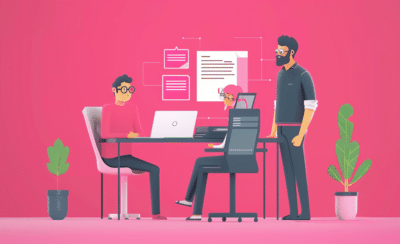It can be tough to stay motivated when you’re learning things. Learning takes practice and discipline (not to sound like your 8th-grade math teacher). Therefore, sometimes breaking the big picture of learning into smaller, more encouraging steps and milestones really helps—especially if they’re fun. So, enter gamification and gamify -ing the process.
Gamify -ing otherwise mundane or even just long-term educational processes can keep users motivated and engaged. In fact, in skill-based and EdTech apps, gamification has been shown to increase productivity by 80%.
So, what are the pros and cons of gamify -ing your app? Well, that’s exactly about what we’re here to discuss. Let’s dive in.
TLDR; Contents
What is Gamification (and what does it mean to Gamify)?
Gamification (and the strategy of gamify -ing an app) is the method of creating game dynamics and game design aspects in non-game environments.
When it comes to staying motivated in the long term—especially with younger audiences—making the educational process into a game can engage and improve learning outcomes.
In the short term, it introduces a level of fun and competition. Moreover, when used correctly, gamification adds the need to actually grasp concepts to apply them accurately (and win).
Gamify – ing the process of learning isn’t new. Even professors in higher education use this tactic—and that’s because it works. So why not introduce it into EdTech, for any aged audience, in any learning environment?
The Pros and Cons of Gamify – ing Your EdTech App
Pros
Influences User Behavior and Motivates Action:
Providing short-term incentives (fun, competition, rewards) can compel participants to stay engaged in the learning process.
Builds Skills:
Along the lines of being engaged and needing to critically think about the concepts at hand comes building the skills involved. Encouraging in-depth engagement honed skills necessary to complete tasks (and achieve rewards and victory.)
Promotes Knowledge Acquisition:
Practicing concepts in a hands-on manner encourages learners actually to understand and, therefore, retain the taught material.
Consistently Surfaces Progress:
Educators need to know where their students stand in the learning process to understand what to focus on. Gamify -ing the learning process provides insight into how students are doing, who is lagging behind or needs more advanced material, and what concepts need to be reinforced better.
Unifies Classrooms:
Gamification done right can increase teamwork and friendly competition. And, at many of our cores—extroverts or not—we are social creatures motivated by social interaction and collective action. So, gamify -ing your app can make it not only engaging due to game dynamics—but also social ones.
Fosters Creativity, Curiousity, and Innovation:
Gamify – ing can encourage creativity and critical thinking, which introduces new applied ideas and thinking to the concepts and beyond.
Cons
Requires Higher Investment:
Creating, designing, and building a thoughtfully tailored gamified app takes creativity and investment. And that’s because it’s simply not as straightforward as building an app for flashcards or quizzes.
So, if you try to gamify effectively, it takes a different level of effort—one that will probably cost more. Additionally, if your gamification strategy involves some sort of more complicated tech, such as AI, the build process will be even more complex.
Introduces Possibly Addictive Elements:
Becoming addicted to learning is good, right? Well, to a certain extent, sure. But not when getting the badge reduces the whole activity to winning—and not learning. Gamify -ing an app takes thought in order to make the entire thing productive towards educational outcomes.
So, if users can just skip through the videos and randomly guess on quizzes until they get the badge—there’s a strategy flaw in there. Alternatively, if users become “addicted” to the game elements in the app and neglect learning outcomes (studying for tests) outside of the app—that can also be detrimental to learning.
(Can) Cause Fatigue or Reduction in Productivity:
A well-gamified app will change its motivational strategy somewhat as the user progresses in learning. That’s because…well, take the horse/carrot scenario. Eventually, the horse will get tired of chasing carrots. So, it might be beneficial to alternate carrots with apples, some oats, or other things horses like. But, of course, this is (probably even more) true for humans—especially if the learning process is very difficult.
For instance, one EdTech software I’ve had to use added five problems to every practice question I got wrong. And it was so frustrating; I really couldn’t care less about the badge at the end. So, point being—a good gamification strategy will vary itself throughout the learning process while keeping the end goal (actually learning) consistent. And it’ll create little-to-no friction and frustration.
Well, this was a lot. We know.
Coincidentally, hi, we’re Goji Labs—a product and software development consultancy with experience in designing, “rescuing,” and deploying hundreds of products.
Looking to develop a new app or revamp an existing one? Need some product strategy or mobile app and software development help?
Have any general questions about who we are and our authority on the subject?
Reach us at GojiLabs.com or drop us a line.
– Goji Labs




